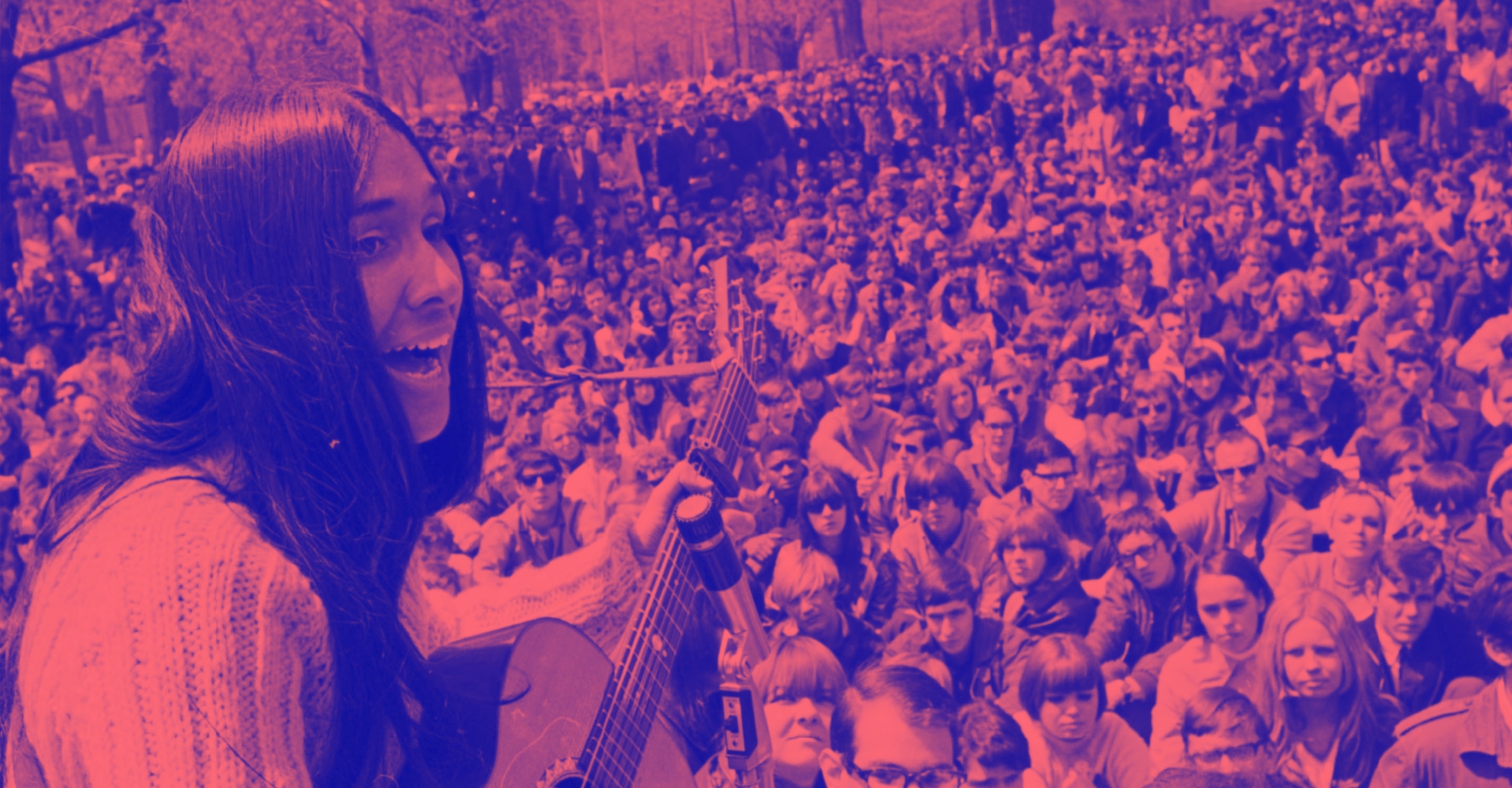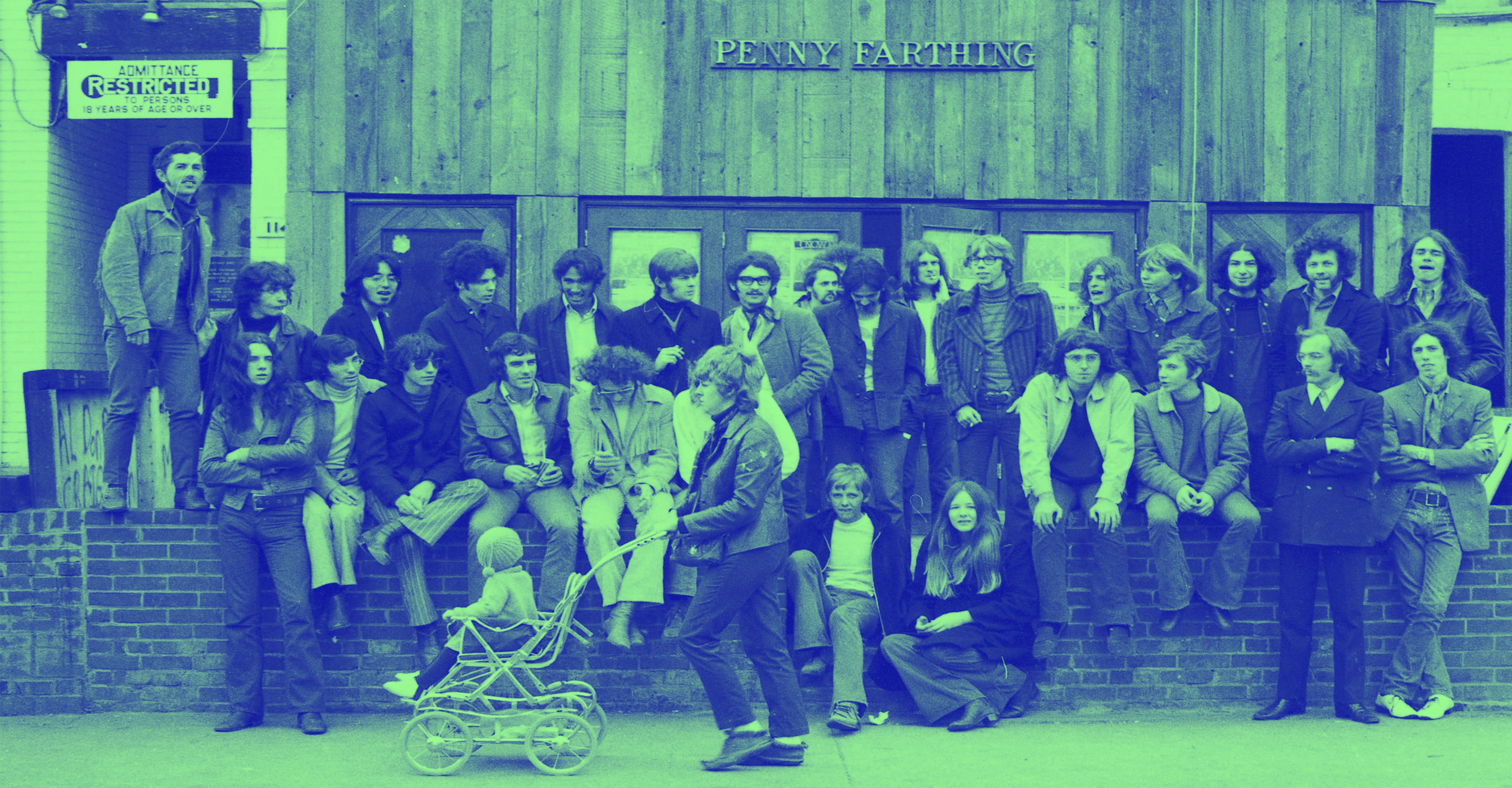
Did you know that creative expression releases positive endorphins similar to exercise or meditation? It's true! We experience a sense of belonging when we play and instrument, sing in the shower, or dance with our friends.
Music makes the world feel less lonely by bringing people together and creating connections where you might not always expect them.
Creating Community through Song
Whether singing along with your friends on a roadtrip or raising your voice in a protest song, songs have the undeniable ability to bring people together.
Songs can remind you of home; they can create new communities through shared passions and interests. As you explore this section, listen to this playlist of songs that have united Torontonians in a shared history; a common belief; or a powerful cause.
This online exhibition uses third-party applications including Spotify and YouTube. Check with your organization’s web administrator if you are unable to access content from these channels in the exhibition.
Music brings people together.
— Gord Downey, The Tragically Hip
So my function in anything I do is to help bring people closer in.
When Hart Massey financed Massey Hall in 1894, he did so with the intention of bringing Torontonians together under one roof to enjoy music. At the time, the city was known as “Toronto the Good,” home to as many rules about what you couldn’t do as there were churches.
Not every music venue in Toronto had an intentional beginning. In the words of urban activist Jane Jacobs, "Old ideas can sometimes use new buildings. New ideas must use old buildings."
Many of the spaces created for community originally served another purpose.
888 Yonge Street: From the
Masonic Temple
to the Rockpile
In 1918, the Freemasons built a lodge called the Masonic Temple at the corner of Yonge and Davenport. It later became known as the Rockpile, then the Concert Hall, and was home to concerts featuring almost every style of music: from early rock to punk to new wave to reggae. It also was home to Toronto’s early hip hop scene, where Michie Mee and Maestro Fresh-Wes dropped their beats in the 1980s and 1990s. The venue has also hosted fundraisers for various LGBTQ2+ organizations in Ontario, and, from 2008 to 2012, the prestigious Polaris Music Prize Gala.
Step Inside
888 Yonge Street
For the Sounds like Toronto exhibition, Heritage Toronto created a 360-tour of the venue, now known as the Concert Hall. Step inside, look around, and uncover additional stories and content!
This online exhibition uses third-party applications that may not be compatible with your current version of browser. Check with your organization’s web administrator if you are unable to access content from these channels in the exhibition, or try to access this webpage from another browser.
Loading...
Right-click on the virtual tour above to enter into fullscreen mode.
You can use your mouse to explore or your keyboard. Use arrow keys to explore each part of the tour. Use page up/page down to zoom. To go to the next section of the tour press the "." key. To go to a previous section of the tour, press the "," key. To engage with an object on screen during the tour, press "1". Press "2" to move to the next object. Use the arrow keys to scroll when reading object descriptions. To close the object, press the Esc key.
View TranscriptExterior view of an urban street at night, facing the arched entrance to a five-storey building. The building has neon lighting highlighting the entrance way.
To the left of the entrance is a historic photograph of the intersection showing streetcar lines and old cars.
On the opposite side of the street, there is a Canadian Tire and gas station, designed in the Art Deco style.
[The Lobby]
Inside the doors there are seven steps up to the lobby. Around the crown moulding, there are photographs of musicians who have played in the venue. On the ceiling is a chandelier with round lights.
There are doorways on several sides, but the only entrance that is open is straight ahead.
[The Main Hall]
The first view is of the main stage. The stage is two-tiered and has black flooring. There are red curtains, which are drawn to the sides. On the stage are light letters ITRG, and a wrought-iron spiral staircase.
The view 90-degrees to the left of the main stage shows glass-walled offices on the upper balcony level and open space on the lower level. On the left wall is a poster. The poster reads "THE ULTIMATE HIP HOP BATTLE: New York Invades Toronto" and describes a hip hop battle in four rounds: The Female MCs, Battle of the Crews, Battle of the DJs, Battle of the Human Beat Box.
The view 90-degrees to the right of the main stage shows a brick wall with the words "The Concert Hall" painted on it. On the floor is a photograph. It shows a woman hiding underneath a table, as people applaud around her.
The view 180-degrees from the main stage shows the back of the main hall and the upper level balcony with a low railing. You can access the balcony.
[The Balcony]
From the balcony, there is a wider view of the main hall and stage on the ground floor. There is a variety of seating, including old concert seats, benches with red leather, and modern leather couches. There is a clock on the wall that looks like a modern antique. The view 90-degrees to the right shows a poster on the wall. The poster has a yellow background and a baseball flying across it. The text on it reads "Feverpitch! A Gay Dance" with details about the event to be held at the Concert Hall on September 4, 1981.
There is also a pink concert ticket stub for SOAP Fundraiser Dance, which has a drawing of a pig dressed as a police officer, in a bathtub full of bubbles. The bubbles are covering the word "soap". Details about the dance party are written below.
There is an access point 90-degrees to the left of the centre of the balcony.
[The Red Room]
This space is brightly lit and has three Gothic-looking chandeliers hanging from the ceiling. There are a series of red chairs around the edge of the room on a raised wooden surface. There is a stage straight ahead with an ornate red and gold chair on the left and a drum kit at the centre. In front of the stage is a historic photograph showing a group of 11 people seated around a table in front of the stage.
180-degrees from the centre view, there is a billiards table set up for an opening shot. There are more red chairs at the back and an upper level balcony.
From Yonge Street to Queen Street...
When the Province of Ontario changed liquor laws in 1947, restaurants and taverns were able to serve alcohol, giving them a reason to offer live performances. Toronto’s music scene exploded: On Yonge Street, a dozen venues like Le Coq D’Or and the Colonial Tavern opened and Oscar Peterson, Archie Alleyne, Jay Douglas, and others found a community.
Another of the city’s first cocktail bars, the El Mocambo, became beloved by the area’s university students. Made famous by the Rolling Stones in 1977, it was a mainstay of the underground music scene. Feminist icon Lorraine Segato performed here with the Parachute Club and, in the early 2000s, the venue hosted monthly queer rock ‘n’ roll parties organized by Will Munro.
This online exhibition uses third-party applications that may not be compatible with your current version of browser. Check with your organization’s web administrator if you are unable to access content from these channels in the exhibition, or try to access this webpage from another browser.
Keyboard controls: Use arrow keys to rotate the object and page up/page down to zoom.
Explore the original Speakers Corner box from 299 Queen Street West, MuchMusic's headquarters. On Speakers Corner, anyone could find up to 60 seconds of fame, performing a song, or saying what was on their mind.
Over on Queen Street West, other communities were being created. In the 1980s, Caribbean music rocked the BamBoo, while across the street Moses Znaimer was creating another sort of community - not just for Toronto, but for all of Canada.
From 1984 until 2011, MuchMusic generated a sense of intimacy among its VJs, performers, and the audience, whether they were in their living rooms at home, or standing outside of the studios on 299 Queen Street West.
We are now firmly in the era of digital music communities, where streaming services co-exist with social media. New spaces are being forged by artists like The Weeknd, who first launched his music career on YouTube, or Indigenous post-classical tenor Jeremy Dutcher, who used historical wax cylinders of his ancestral language in his award-winning album, Wolastoqiyik Lintuwakonawa.
Keep scrolling to explore the stories of artists and venues who have created local or global communities, while calling Toronto home.
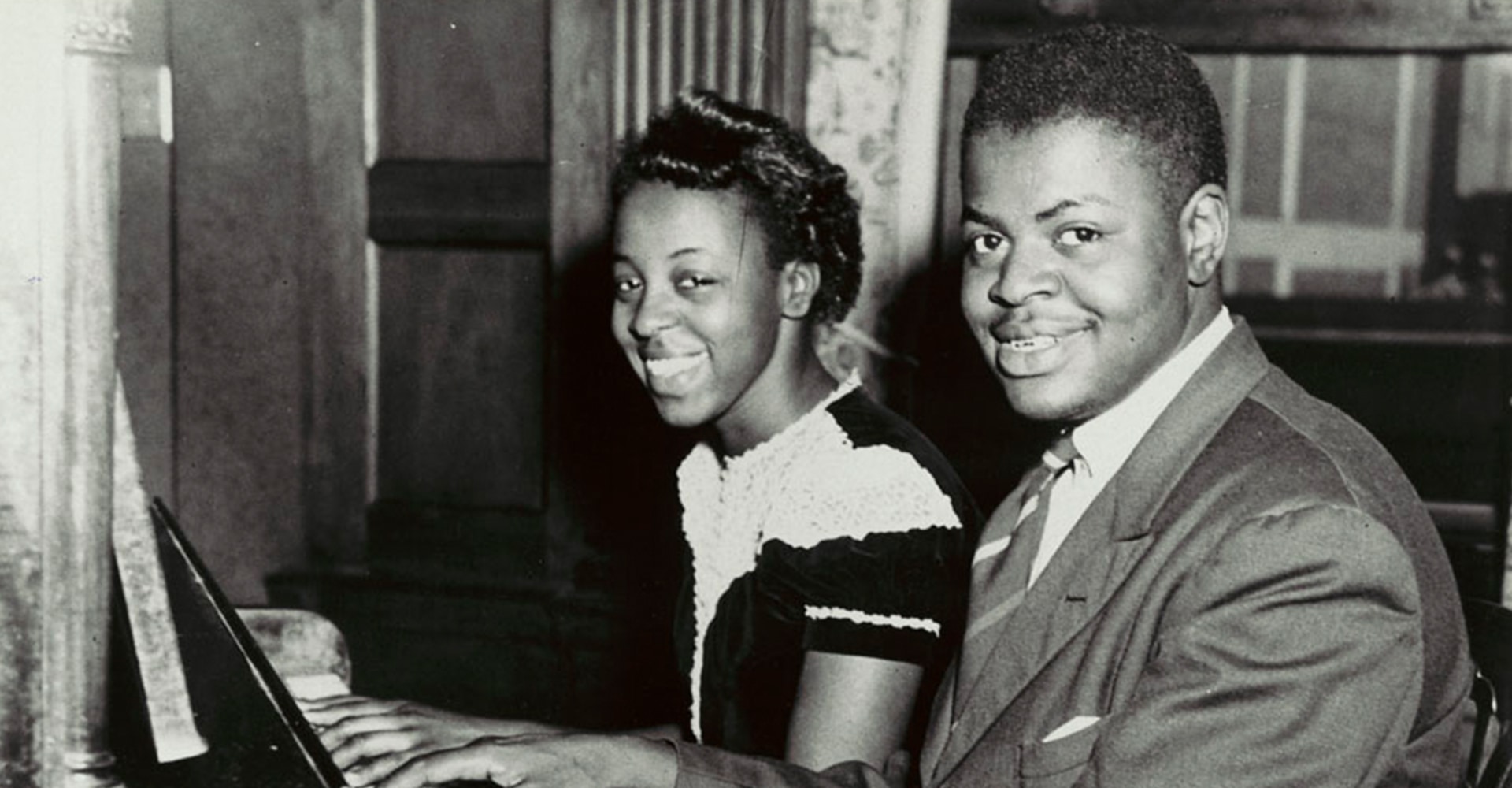
Oscar Peterson and his sister, Daisy Sweeney, play the piano, circa 1940.
Photo by D.C. Langford, courtesy of Library and Archives Canada
Oscar Peterson
Born in Montreal to parents from the West Indies, the great jazz pianist Oscar Peterson (1925-2007) made his way to Toronto in the 1940s, and debuted at Massey Hall in 1946.
He later opened the Advanced School of Contemporary Jazz to mentor emerging talent from across the continent.
Find Out More about Oscar Peterson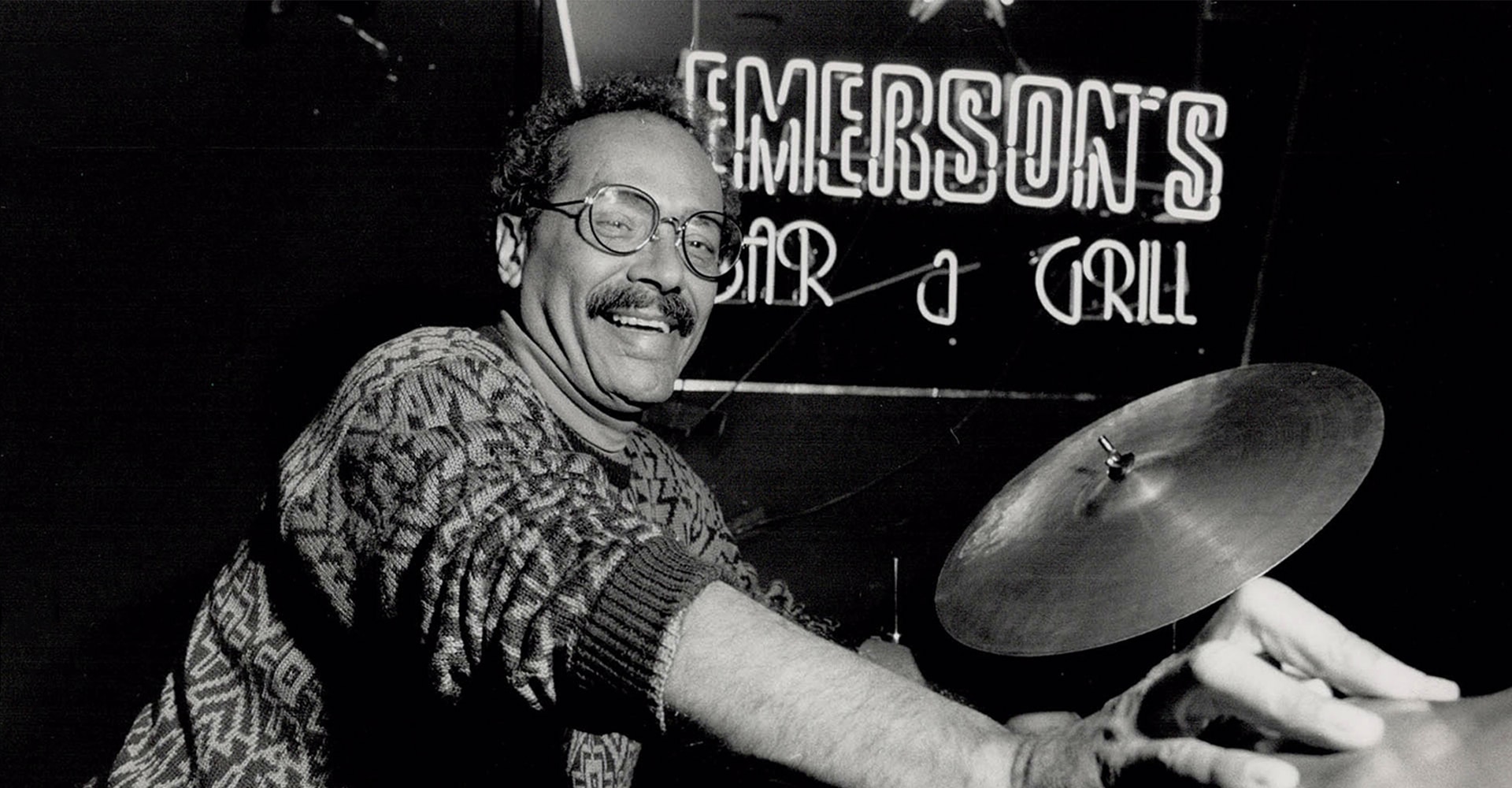
Drummer Archie Alleyne at Emerson's Bar and Grill, 1988.
Photograph by Alan Dunlop, courtesy of Toronto Star Photo Archives.
Archie Alleyne
After experiencing racism as a Black musician in Toronto’s burgeoning jazz scene of the 1940s, Archie Alleyne (1933-2015) knew the importance of community and opportunity. A mainstay at the Town Tavern and elsewhere on Yonge Street, Archie is credited with influencing several generations of Canadian jazz drummers.
We would be playing at Le Coq d’Or, and next door at the Edison,
Bo Diddley or Carl Perkins could be playing. The doormen would say,
“Let me see your ID,” and I’d say,
‘Oh, I play with Ronnie Hawkins,’ and
they’d say, ‘Oh, go ahead.’— Robbie Robertson on Le Coq d'Or
This online exhibition uses third-party applications including Spotify and YouTube. Check with your organization’s web administrator if you are unable to access content from these channels in the exhibition.
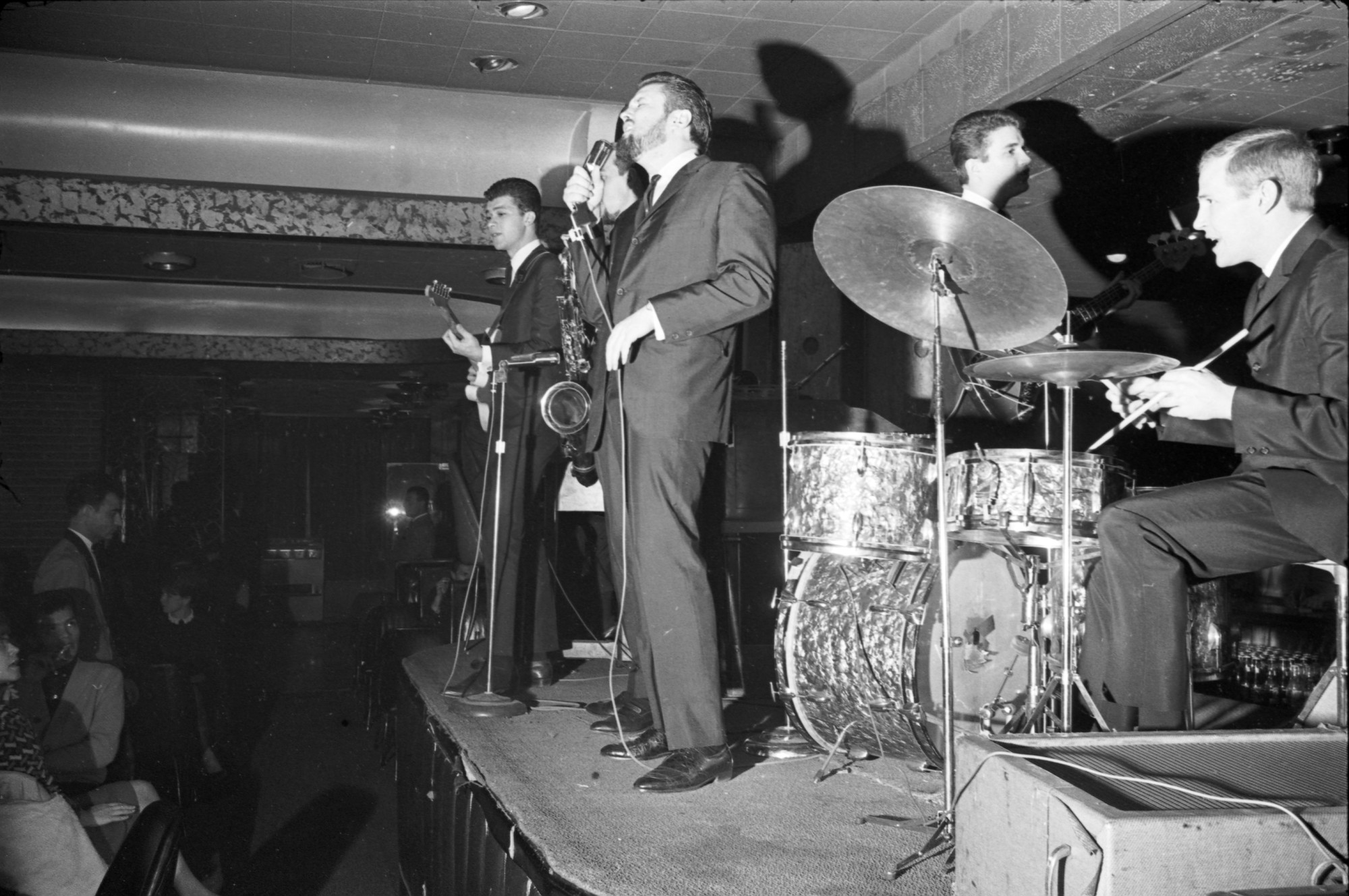
Ronnie Hawkins and The Hawks at Le Coq d'Or, 1963.
York University Libraries, Clara Thomas Archives and Special Collections, Toronto Telegram fonds
Le Coq d'Or
One of dozens of venues that lined Yonge Street, Le Coq d’Or is most strongly associated with Ronnie Hawkins (born 1935).
A mentor to countless performers through his band, the Hawks, Hawkins and the venue's owner, William "Bill" Bulucon, later opened up a teenage dance club, the Hawks’ Nest, on the third floor, creating a new space for young audiences and local acts.
El Mocambo
To the west of Yonge Street, near Kensington Market, the El Mocambo was tremendously popular with students from nearby University of Toronto and George Brown College.
Although best known for an appearance by the Rolling Stones in 1977, in more recent decades, the “El Mo” played an instrumental role in feminist, avant-garde, and underground styles of music.
The famous venue has also hosted several prominent Canadian political figures: Margaret Trudeau (wife of Prime Minister Pierre Trudeau) famousy turned up to see the Rolling Stones play in the 1970s. Meanwhile, Ontario New Democratic Party (NDP) leader Bob Rae tinkled the ivories at the El Mocambo as part of a 1984 peace party.
Find Out More about El Mocambo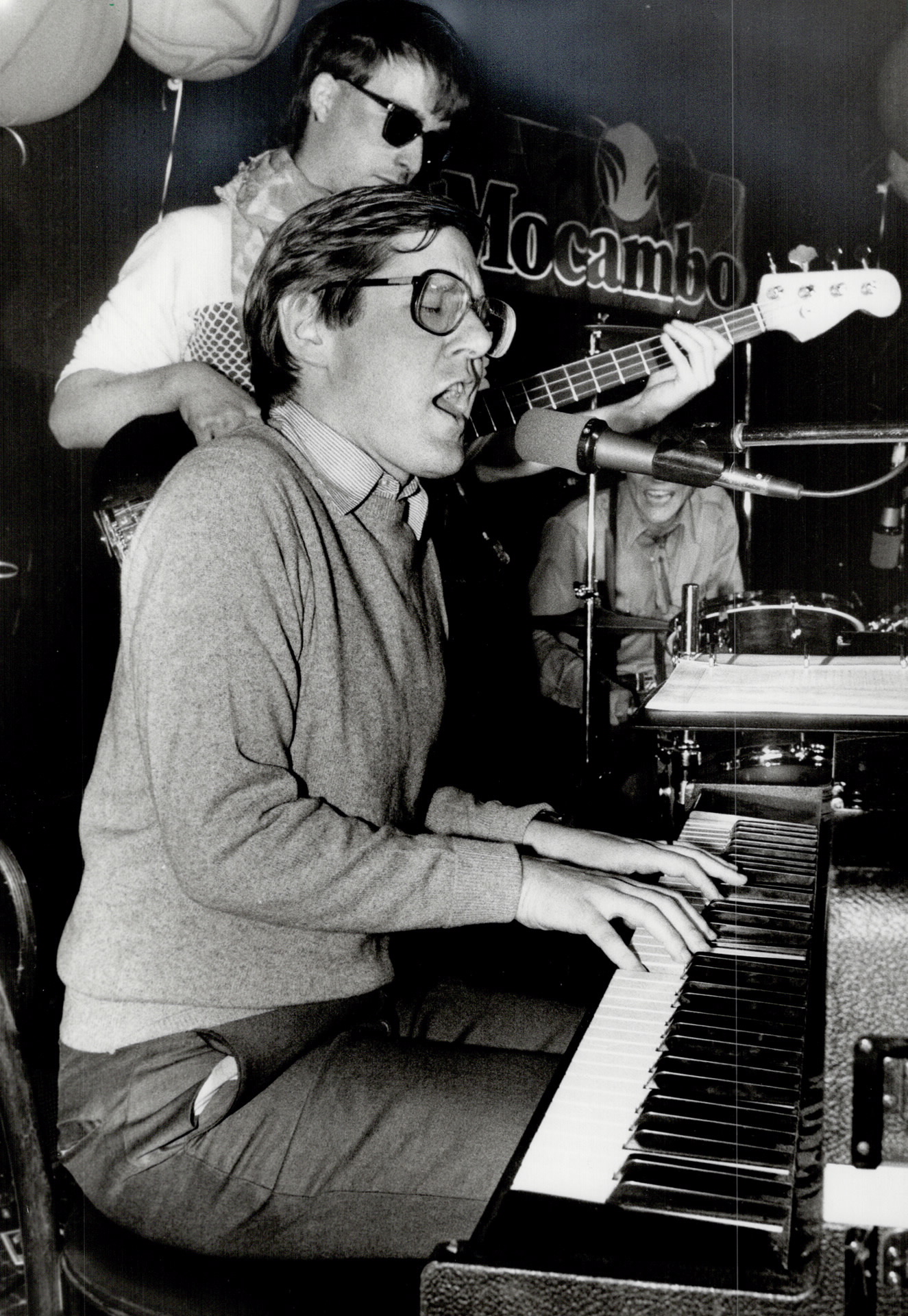
Ontario NDP Leader Bob Rae plays the keyboard during a 1984 Peace Party concert at the El Mocambo on Spadina Avenue.
Photo by Mike Slaughter, courtesy of Toronto Star Photo Archives
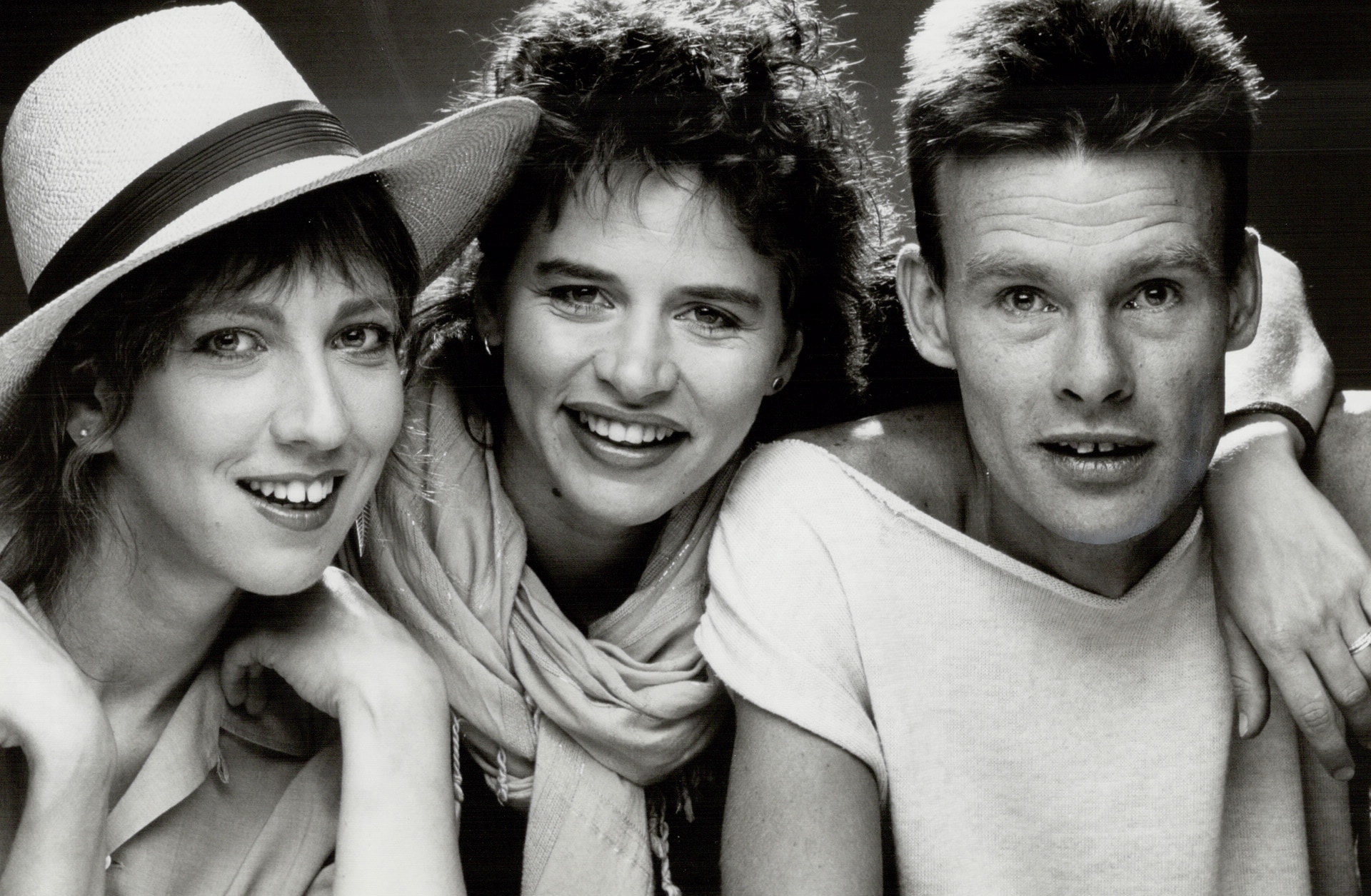
The Parachute Club, 1984.
Photographer unknown, courtesy of Toronto Star Photo Archives
Lorraine Segato & The Parachute Club
Singer-songwriter and social justice advocate Lorraine Segato (born 1956) is an individualist who has inspired audiences with her work for over 30 years.
With the Parachute Club, Lorraine sang about feminism and peace, drawing inspiration from Carribean rhythms.
We want heartbeat
We want madness to end, We want dancin'
We want to run in the streets
We want freedom to live in this peace— The Parachute Club, "Rise Up"
This online exhibition uses third-party applications including Spotify and YouTube. Check with your organization’s web administrator if you are unable to access content from these channels in the exhibition.
The BamBoo
From 1983 until 2002, the BamBoo was one of many lively arts venues for Toronto along Queen Street West, influencing music, fashion, politics, and food.
Owners Patti Habib and Richard O’Brien created an oasis where musicians could break into the music scene, and where regulars would listen and be introduced to new culinary tastes from island nations around the world.

Courtesy of Patti Habib
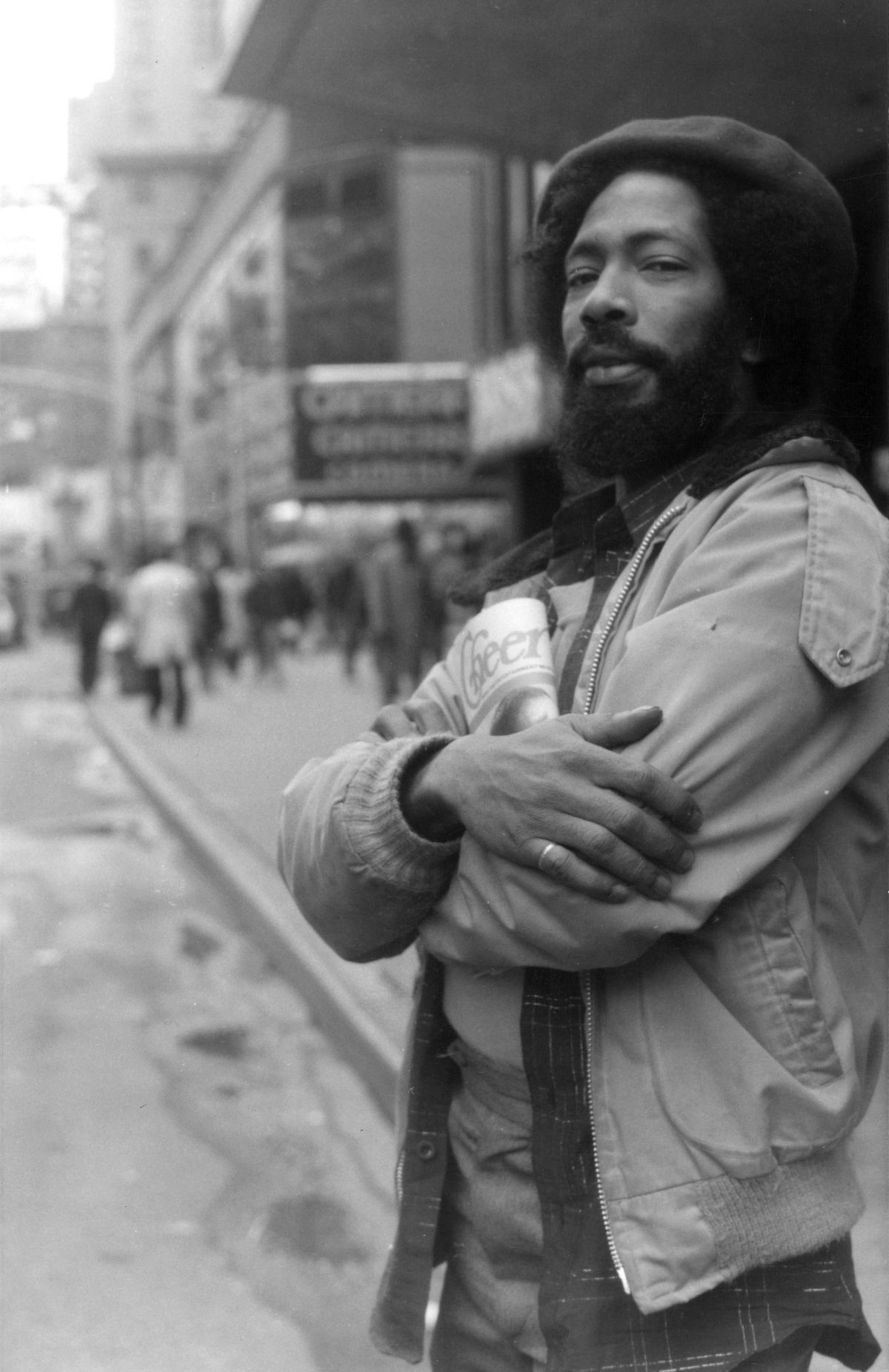
Jackie Mittoo on Yonge Street, Toronto, circa 1969.
Private collection of Daniel Caudeiron.
Jackie Mittoo
Jackie Mittoo (1948-1990) immigrated to Toronto in the late 1960s from Jamaica, where he had already had a successful career as a keyboardist and songwriter.
Along with many other immigrants, Jackie contributed to the flourishing reggae and ska scene in a north Toronto neighbourhood that came to be known as Little Jamaica.
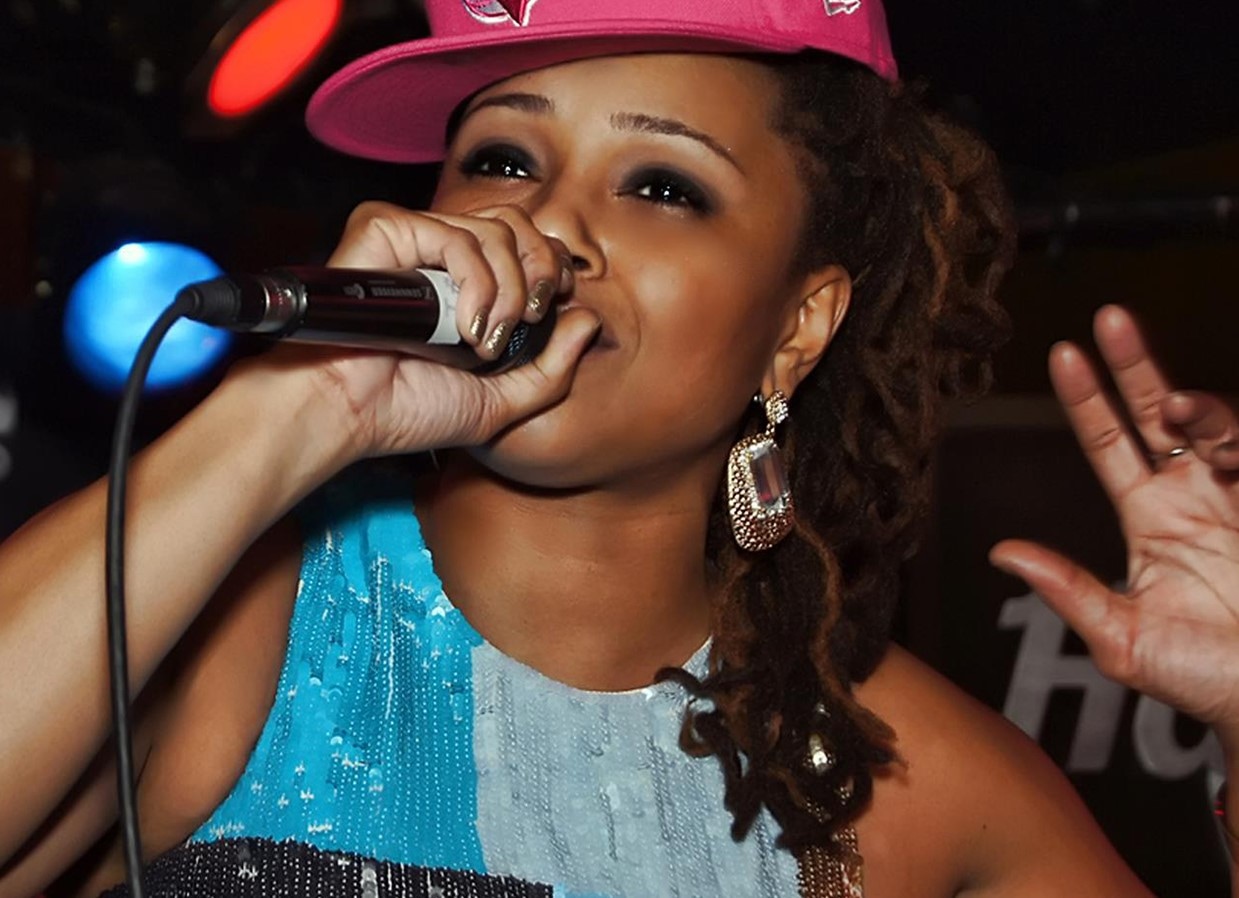
Michie Mee performs at The Hard Rock Cafe, circa 2011.
Photo by Thom Payson
Michie Mee
Canada’s hip hop and rap battle Queen, Michie Mee (born 1970) combines reggae, dancehall, and hip hop to create her unique sound.
As the first Canadian rap artist to sign a major label in the US, Michie paved the path for Canadian rappers and especially for female musicians challenging societal and musical norms, that yes, female rap and hip hop artists do belong here.
MuchMusic
As the nation’s first music video channel, MuchMusic brought diverse talent into the comfort of Canadian homes.
Co-founder Moses Znaimer saw both value and opportunity in creating a sense of familiarity with the MuchMusic VJs, as young viewers were able to see themselves reflected on their favourite channel.
Find Out More about MuchMusicThis online exhibition uses third-party applications including Spotify and YouTube. Check with your organization’s web administrator if you are unable to access content from these channels in the exhibition.

Listen to VJ George Stromboulopolous recount the early days of MuchMusic, on the station's 15th anniversary. Courtesy of Ed Conroy, Retrontario. Please note: This third party video does not provide closed captions.
View Transcript[Exterior of Citytv building in Toronto, pan to street and man with mic talking to camera. People standing or walking by behind him.]
Alright! August 31st 1984 is the date that's going to live in infamy because that's the date that MuchMusic actually signed on the air, I mean initially they played some sort of artsy music thing but the first real video they played [Split screen with Rush music video on the left.] was from Rush, "The Enemy Within" was the video.
And I remembered it clearly because we all tried to find one rich kid in the neighborhood who actually had cable, [Split screen ends, return to man on street] yes, that's right, cable. Remember that?And we raced over to watch MuchMusic and it's been a busy time since that a couple of years later in '86, Music Plus signed on, the French language MuchMusic in Quebec. Since that time in the 90s you had USA, you had a signing on in Finland and as well in Buenos Aires and of course in the 2000s it signed on as MuchMusic Malaysia.Now all of that's fine and dandy but the reality is people only really care about the music. It's always about the music, it's always been about the performances, [man points to Citytv building behind him.] and in its time this building has seen its share of beauties. [Zoom in on building.]
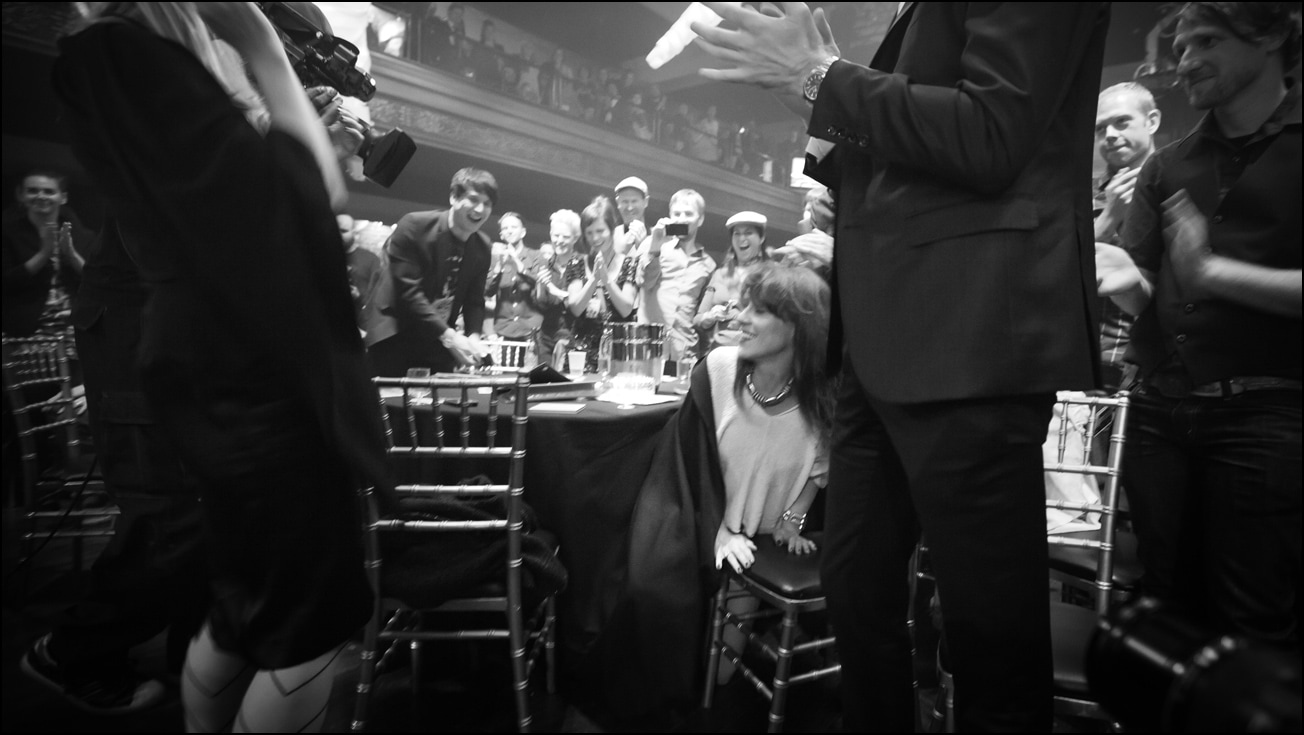
Leslie Feist peeks out from the table at the Concert Hall, as her name is announced as the grand prize winner of the 2012 Polaris Prize.
Photograph by Dustin Rabin. Courtesy of Polaris Music Prize.
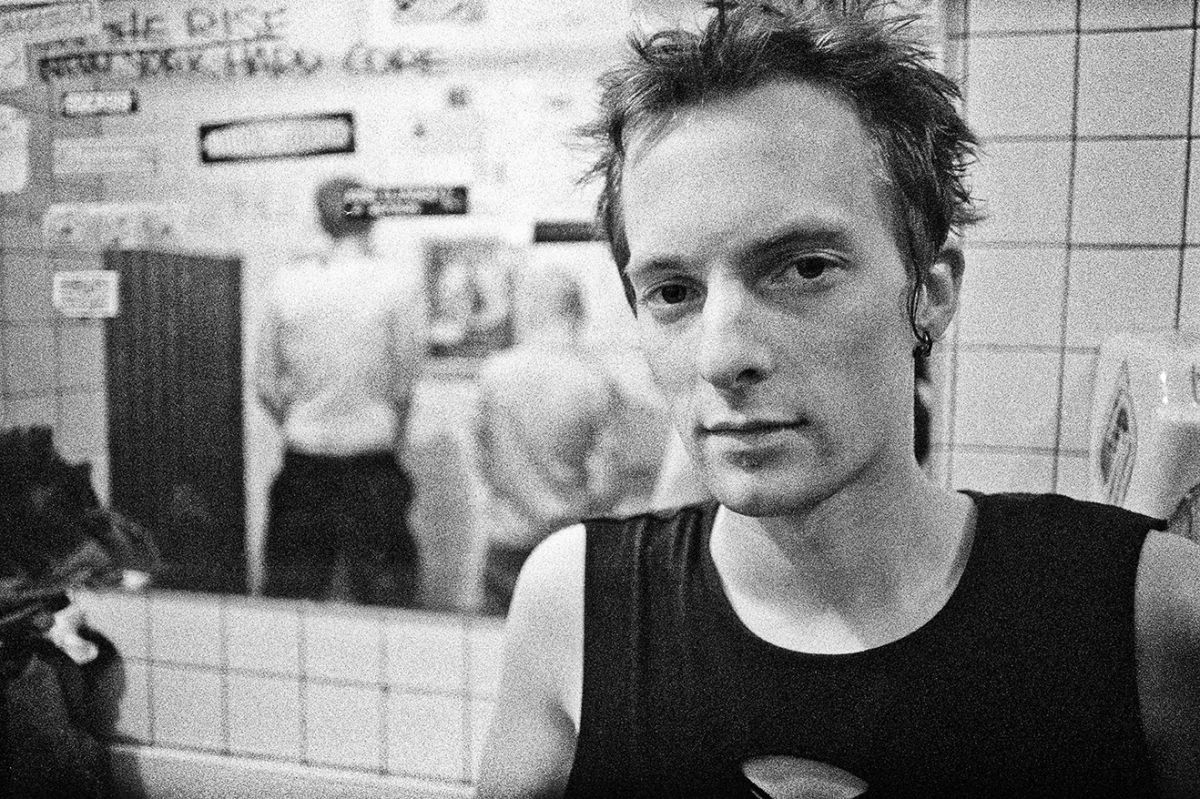
Will Munro at the El Mocambo, 2001.
Photo by Martin Sorrondeguy
Will Munro
Will Munro (1975-2010) blurred the lines between his many roles as an artist, organizer, DJ, music promoter, and queer activist.
Using music and other art forms, Will created new spaces for people to be themselves, regardless of gender, sexuality, race, or age.
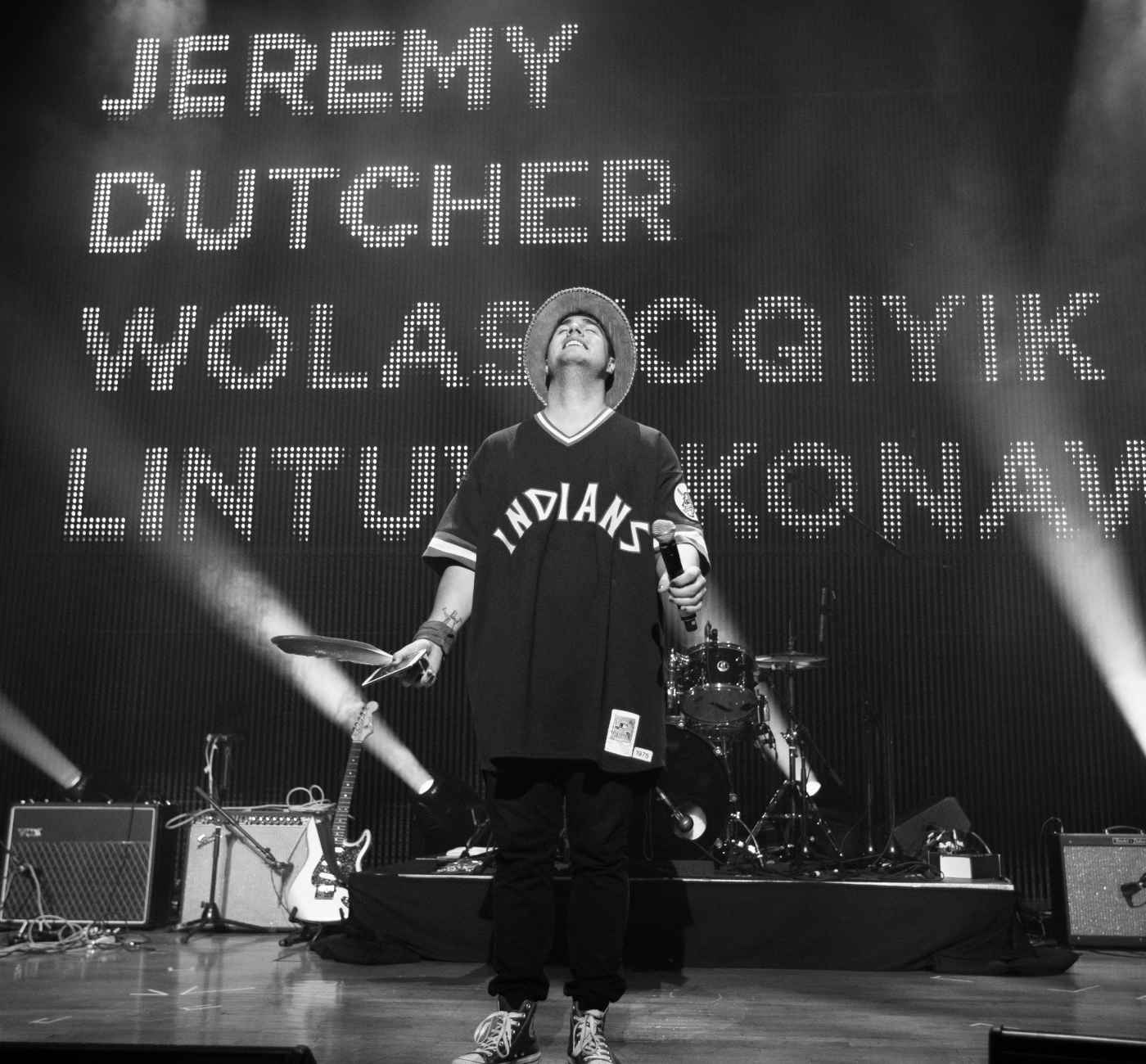
Jeremy Dutcher is announced as the 2018 Polaris Prize winner at The Carlu, Toronto.
Photo by Dustin Rabin, courtesy of the Polaris Music Prize
Jeremy Dutcher
Classically trained as an operatic tenor and composer, Indigenous singer and musicologist, Jeremy Dutcher (born 1990) reclaims his Indigenous language, Wolastoqey, in order to keep it alive.
Through his work, Jeremy decolonizes Canadian music spaces and creates a rebirth of Indigenous language and culture, helping to revitalize what was at risk of being lost.

